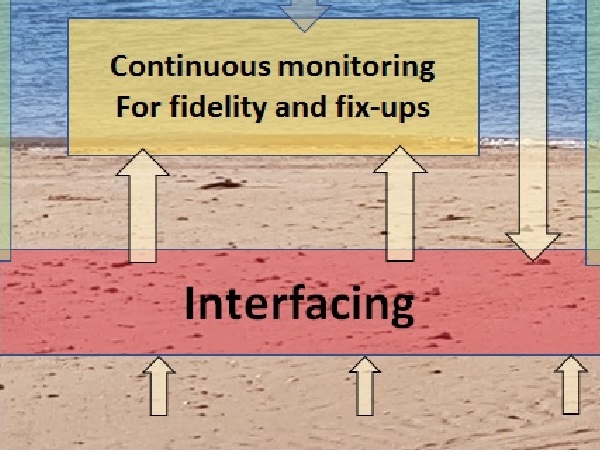The Sights

Don't put destiny on hold. Continue the fitness program.
Some content from page 23 sets the starting context for this page. Enjoy.
The electronic version of our book can be purchased from the Kindle store.
Check out our videos on YouTube. First video. And Second video.
Page 23 context
Where did we finish? Ah yes. Enjoy.
Henri
For exercise: Shake the tree.
This is our continuing project: The search for happiness, destiny and how to rescue souls. "CTU IV: Destiny calls". Enjoy.
Some of the following content will have a deeper context after reading Contemplate the Universe and Beyond the veil.
We have finished "The Touch" and it's now on line. The current topic is, "Destiny calls".
Henri
I decided to expand my knowledge on the types of RNA. There's a few, so I decided to count to five to set my overview: 1. Messenger RNA (mRNA); 2. Transfer RNA (tRNA); 3. Micro RNA (miRNA); 4. Small nuclear RNA (snRNA); and 5. Ribosomal RNA (rRNA). I recognized the mandatory secret evolution handshake in the articles, but after that, it's all hi-tech.
We've touched on mRNA, because it's part of the central dogma (It's the code the ribosomes use to make a string of amino-acids that become the folded proteins). We've touched on tRNA (It's the small RNAs that carry a single amino-acid to the ribosome).
With miRNA (miro), our idea about introns being the control and exons being the data is strengthened. But I'm not going to panic if those two are mixed. It's highly likely they are. At any level looked at, there are other integrated processes involved. Some miRNA are derived from the introns during the splicing processes as introns and exons are edited. Generally, the miRNA gives the ribosomes other hints on how to translate the mRNA. Remember though, the multilayering.
The snRMA (small nuclear), amongst other processes, is associated with splicing of mRNA, to remove the introns. Makes the head spin.
The rRNA has the largest variety and are the largest molecules. Their bits and processes make the ribosome subunits in the nucleus, and, maybe the entire ribosome in the nucleus. I haven't found that out yet.
Let's have a go at an analogy: Go to the library and copy the pages (mRNA) to make our machine. While we're there, take a copy of the parts list (tRNA), and a copy of the barcodes (miRNA) to customize the settings of the machine (Ribosome) that makes the tools to make the machine. Go to the shops and pick up the parts (tRNA charging). Before going to the library though, grab some tools (proteins), to access the library (DNA), for the tools (snRNA) to release the information (All types RNA) that we need. Integrated chicken and egg feedback at every step.
Enjoy. Henri.
When we research RNA, we will be introduced to the nucleolus: The spherical area in the nucleus where the RNAs are made; the ribonucleoproteins (RNP): The ribosome sub-units (rRNA and proteins); the nuclear pore complexes (NPCs): The techno holes in the nuclear membrane; and the transporters that carry the nuclear products into and out of the nucleus: The exportins and importins, sort of, self- explanatory, but they have fancier names.
One of the fun analogies in this, is the role of the transporters. The products have to show their tickets before jumping aboard the transporters, to be taken across the nuclear membrane. I think their tickets are their 3D shape, and there are many types of tickets. The proteins are transported in and the products associated with RNA go out. Everything, in everything, controlling everything? Oh yes.
Enjoy. Henri.
I just searched on "Horizontal gene transfer conjugation" and my world exploded again. A donating cell puts across a "pilus", a hair-like structure to a receiving cell, sends out a signal to the receiving cell, "Have you got this bit of DNA?", waits for a response, then sends the DNA fragments if required, through the pilus as single strand DNA, that enable the recipient to gain some new acquired resistance genes.
That, to any modern person, is the perfect analogy to "synchronization" with our computer files or music. Plug in the USB, or turn on the Wi-Fi or Bluetooth, (phone to computer), "Do you have this song?", "No, send it over", "OK, here it comes" via serial comms at the physical layer. No, I haven't done that myself, but I know that is performed automatically if I've taken my laptop from my office to the classroom, then back again. Sometimes causing problems. Not music though.
That's amazing, and don't forget, all that gene transferring evolved from magic rocks.
Keep the dream alive. Henri.
Contact us
The electronic version of "Contemplate the Universe" can be purchased from the Kindle store. For some context on associated books, search on "Intelligent design".
Say G'Day: henri@ctubybp.com.au






